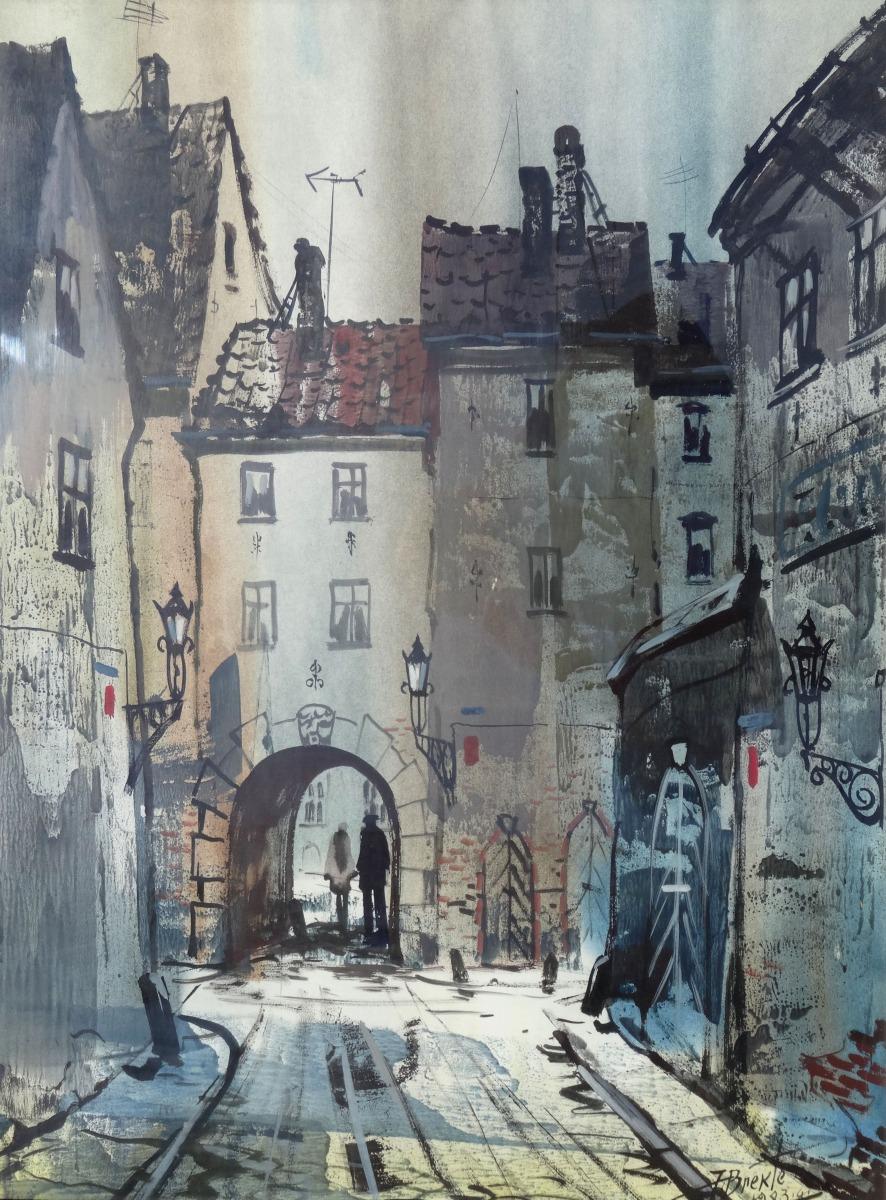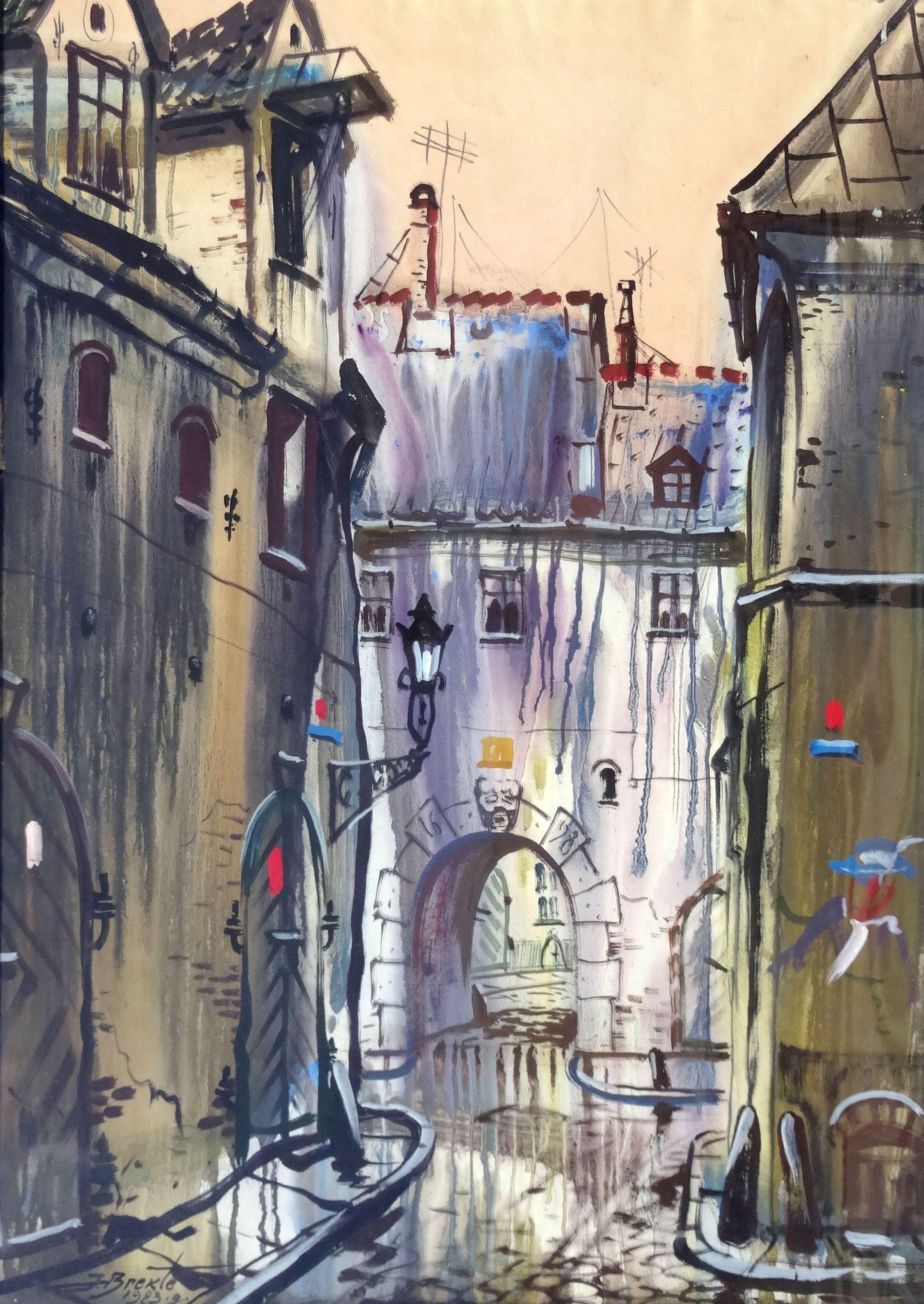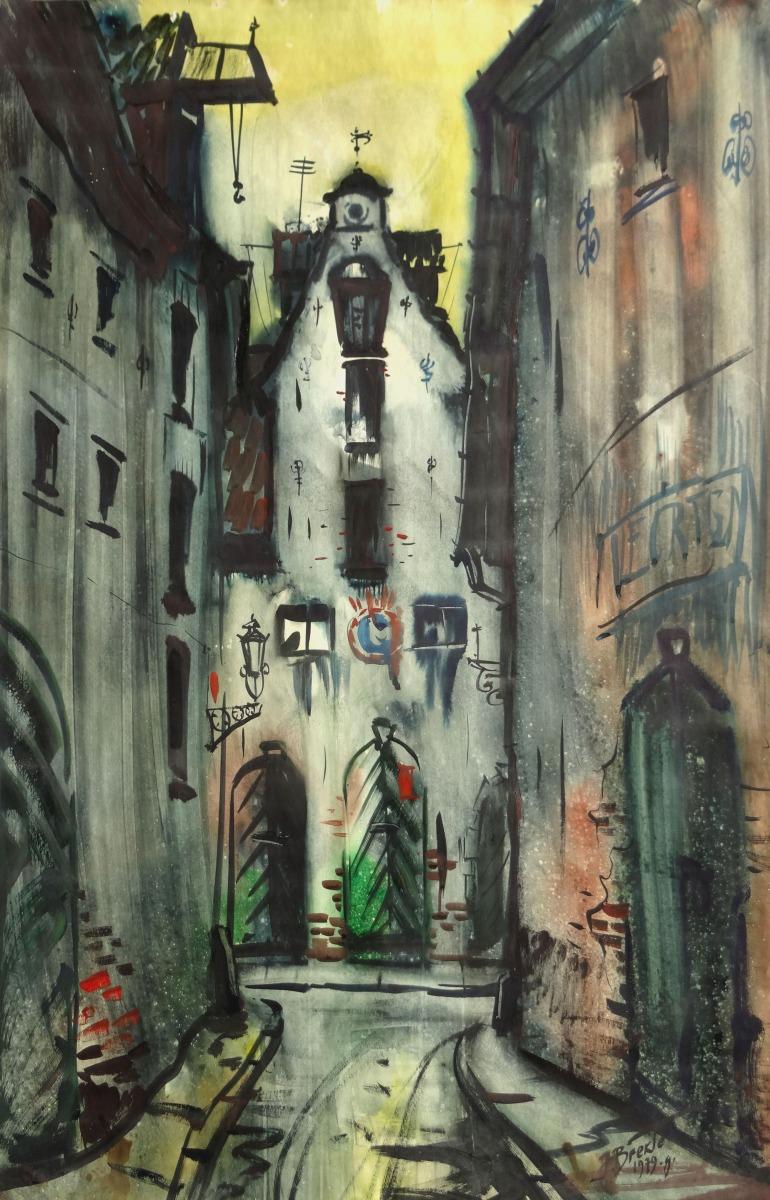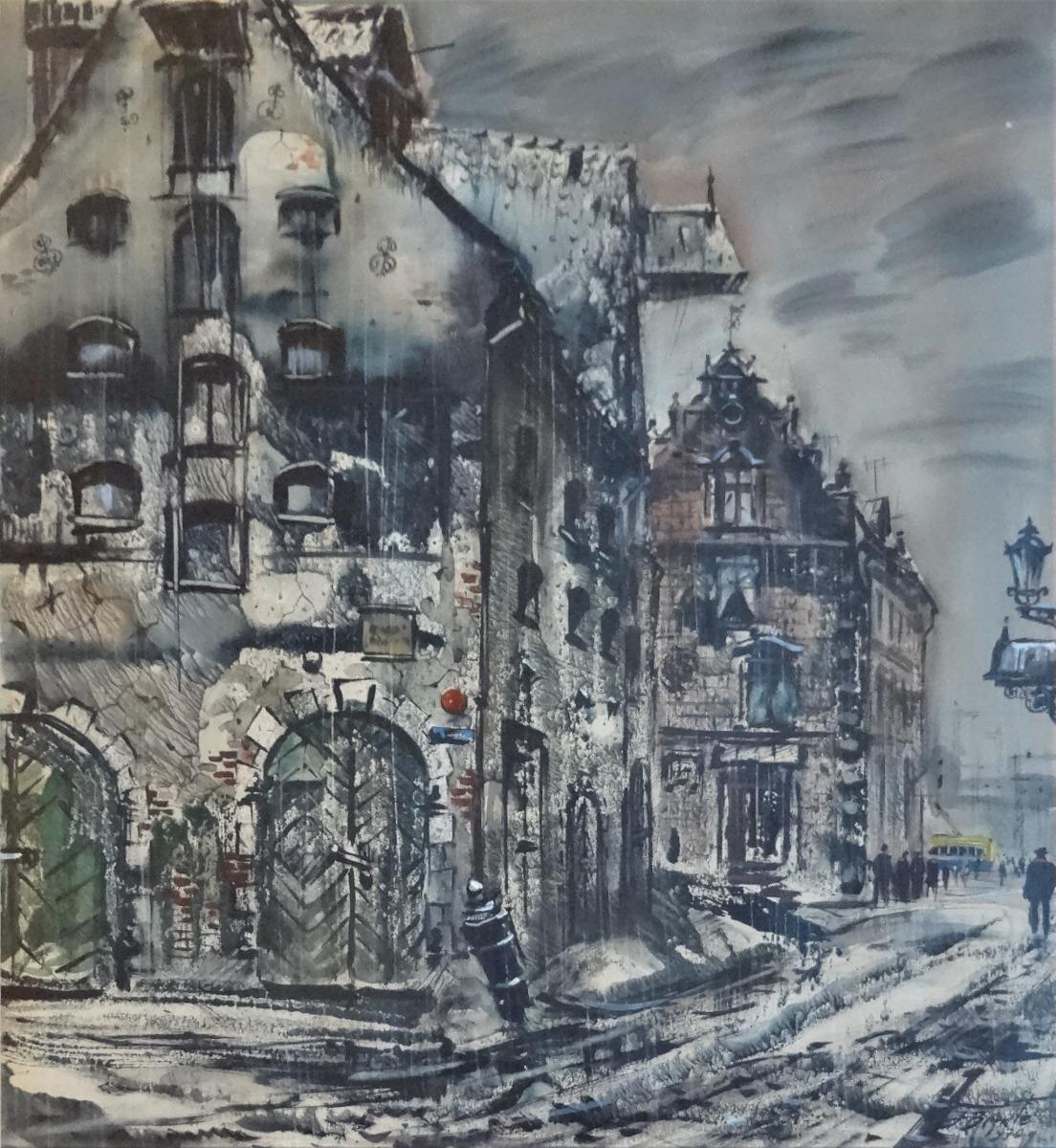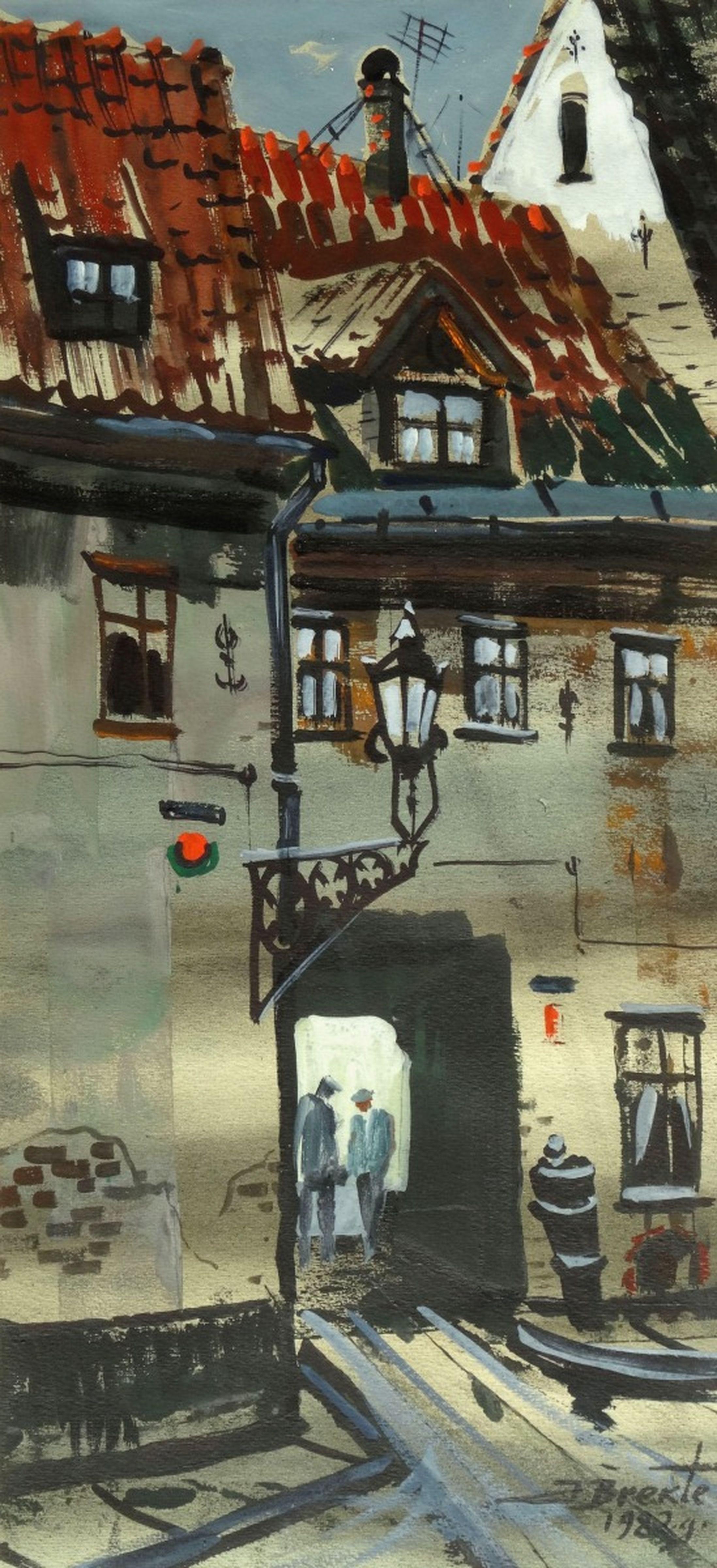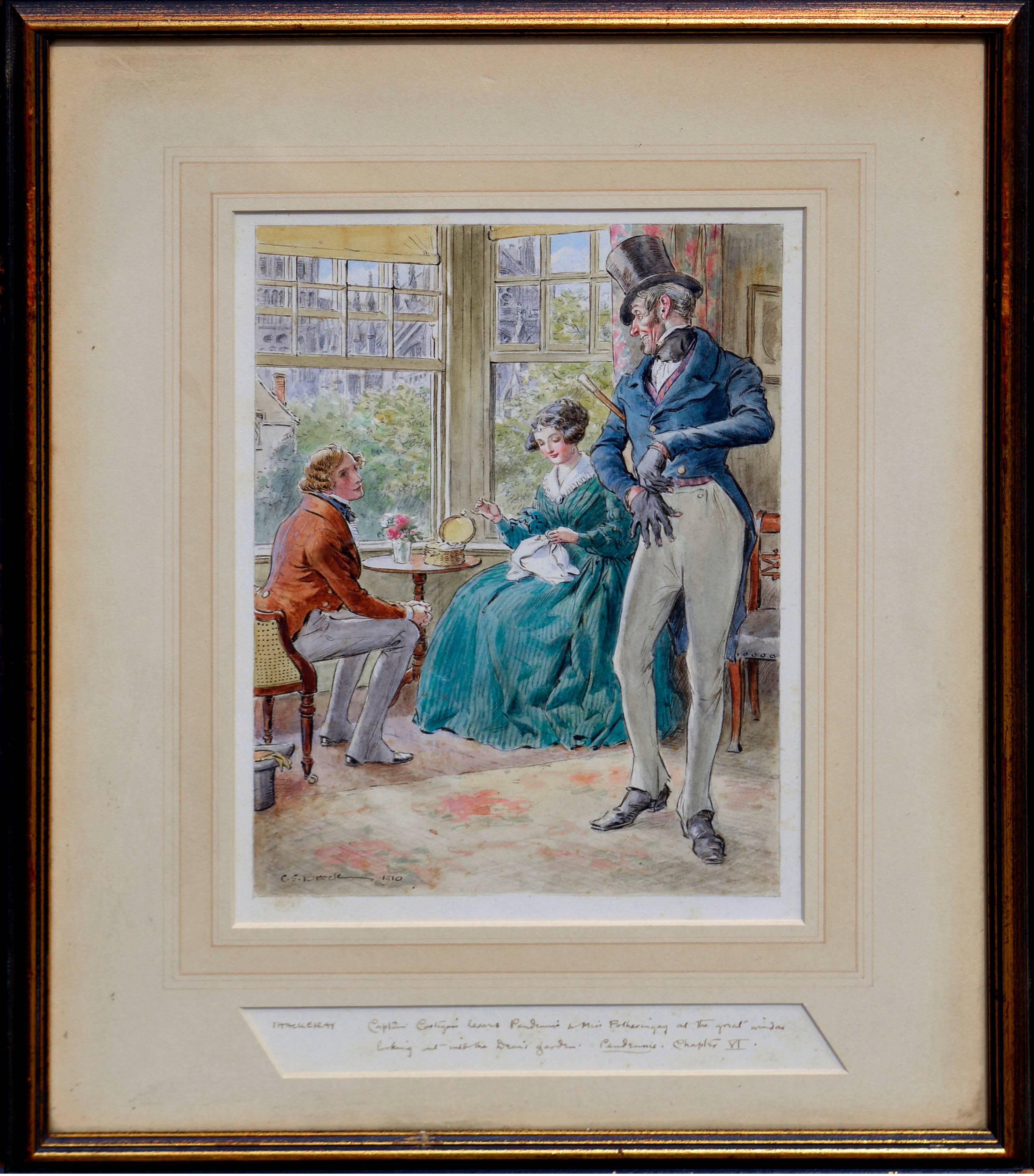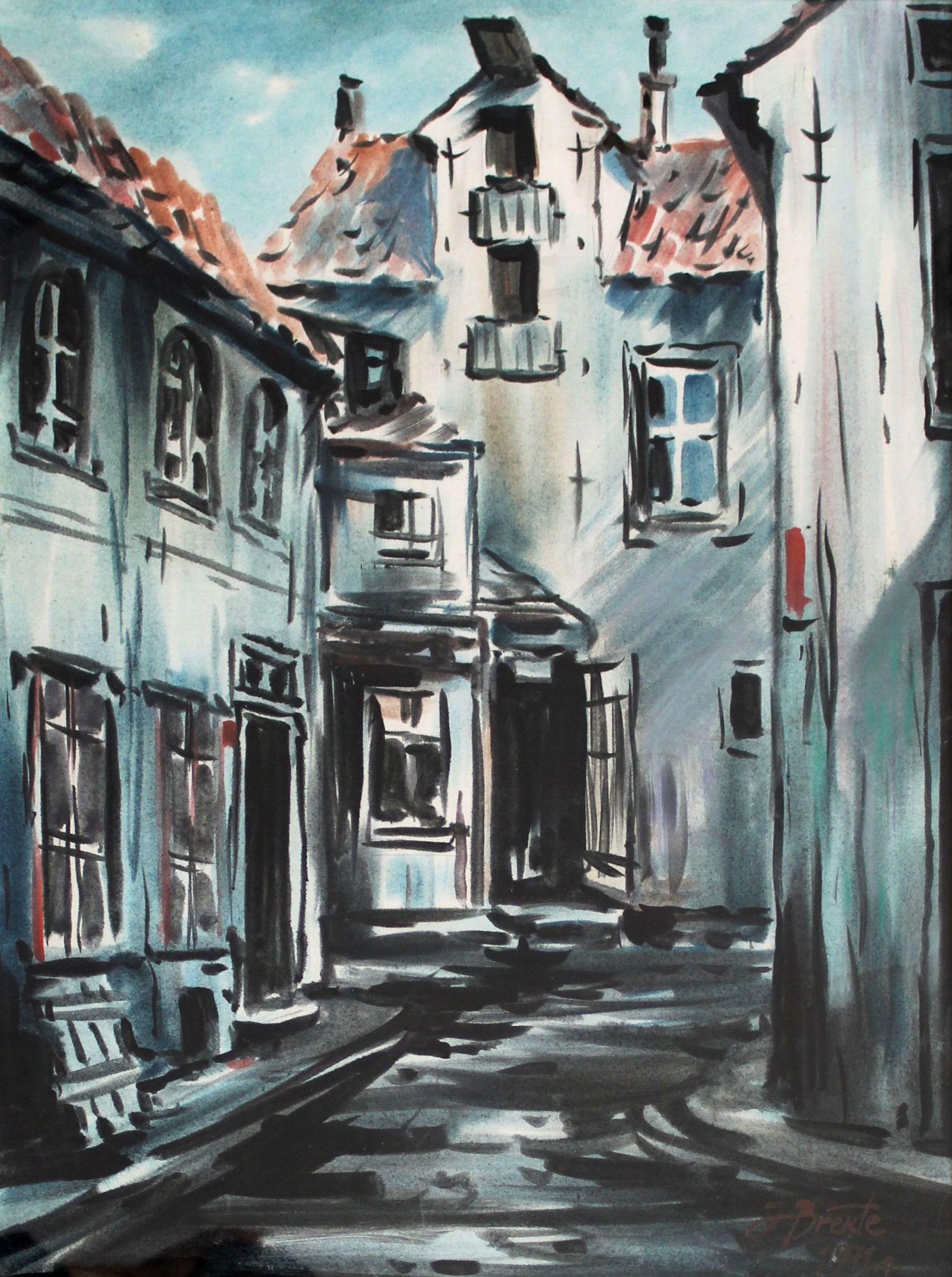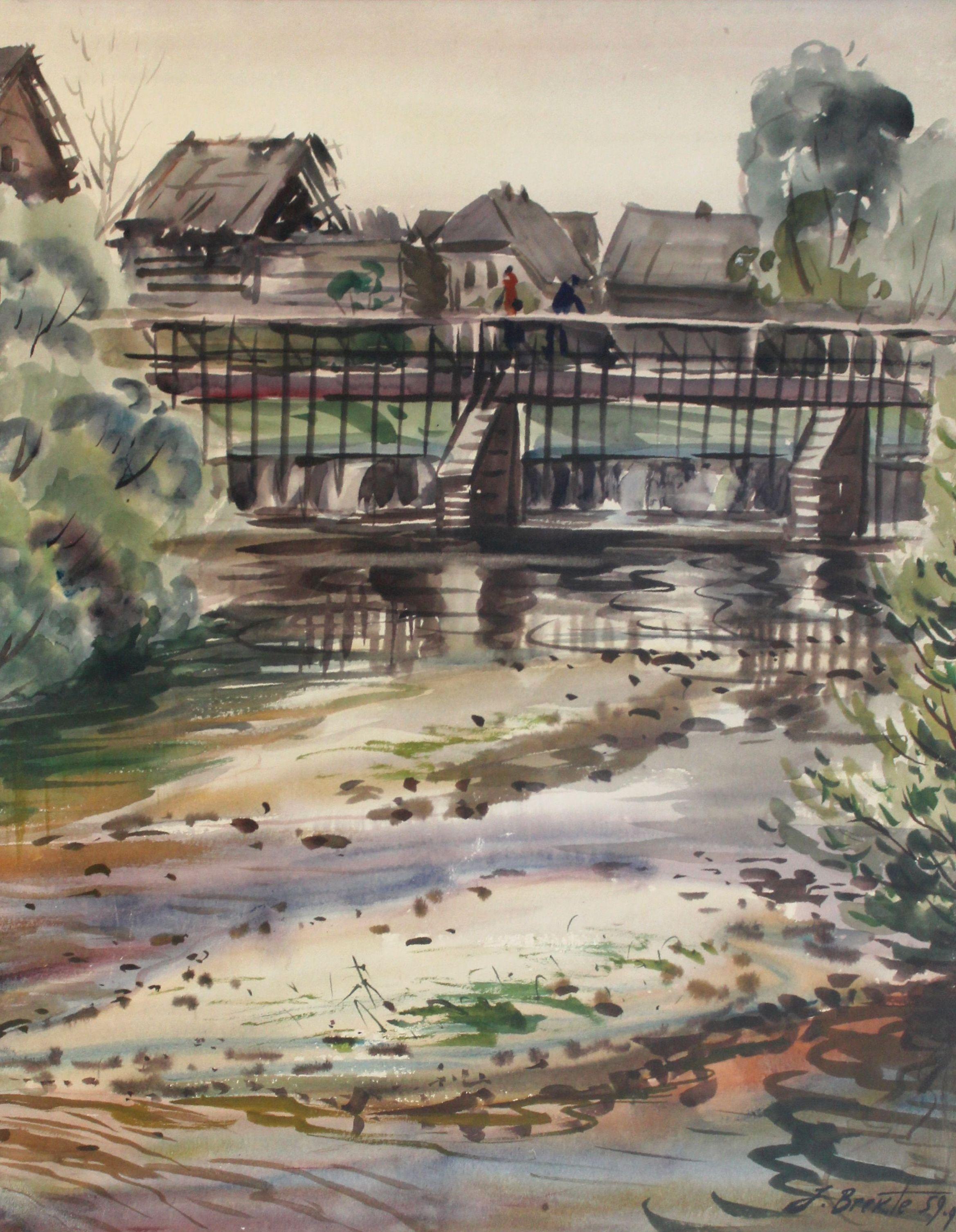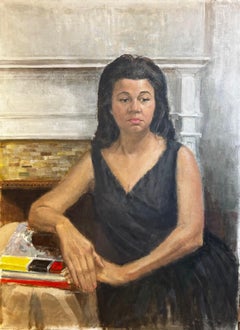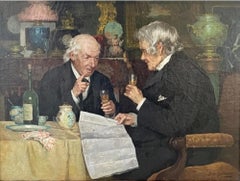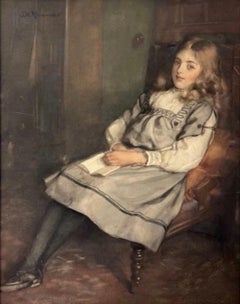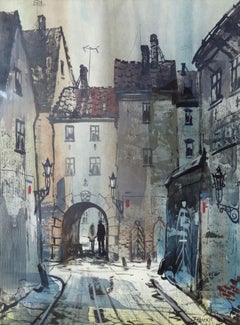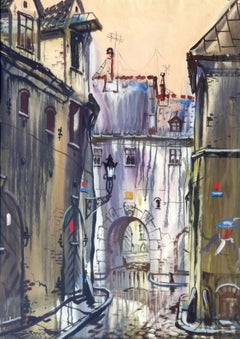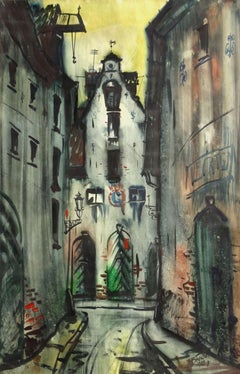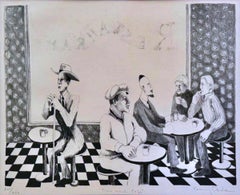
"New York Cafe" Benny Andrews, 1966 African-American Social Realist Work
View Similar Items
Benny Andrews"New York Cafe" Benny Andrews, 1966 African-American Social Realist Work1966
1966
About the Item
- Creator:Benny Andrews (1930-2006, American)
- Creation Year:1966
- Dimensions:Height: 15.5 in (39.37 cm)Width: 19.5 in (49.53 cm)
- More Editions & Sizes:Edition 201/250Price: $1,800
- Medium:
- Movement & Style:
- Period:
- Condition:
- Gallery Location:New York, NY
- Reference Number:1stDibs: LU1841215406042
Benny Andrews
Using an innovative technique he called “rough collage,” Benny Andrews created vivid portraits of everyday people that mixed painting with pieces of clothing and other textural materials.
Andrews grew up in a family of sharecroppers in rural Georgia, his creativity nurtured by his father, who was a self-taught artist, and his mother, who believed in the importance of education. He was the first in his family to complete high school and attended Fort Valley State College on a 4-H Club scholarship. Andrews was limited by the lack of art courses available to him at Fort Valley, and in 1950 he enlisted in the Air Force and served in the Korean War. On the G.I. Bill, he studied at the School of the Art Institute of Chicago (SAIC). While fellow students focused on Abstract Expressionism, Andrews developed his own expressive style; one of his earliest portraits was of the janitors at SAIC. After he graduated in 1958, he moved to New York. Andrews’s first solo show was in 1960 at Paul Kessler Gallery in Provincetown, Massachusetts.
Visibility and social justice were at the forefront of Benny Andrews’s paintings, which meditated on scenes of daily life, drawing on memories of the artist’s childhood in the South. His subjects included his family members as well as other artists, such as Alice Neel, Norman Lewis and Howardena Pindell.
A longtime educator, including for three decades at New York’s Queens College, Andrews avidly promoted opportunities for Black artists, such as cofounding with Clifford R. Joseph the Black Emergency Cultural Coalition in 1969, which advocated for inclusion in museum exhibitions. One of his final works —completed between 2004 and 2006 — was the Migrant Series in which he retraced the forced relocation of Indigenous people on the Trail of Tears, the Dust Bowl migration and the displacement of Hurricane Katrina survivors.
Andrews’s work has continued to garner acclaim after his death in 2006, with posthumous exhibitions including “Benny Andrews: Portraits, a Real Person Before the Eyes” at Michael Rosenfeld Gallery in New York in 2020.
Find Benny Andrews art on 1stDibs.
More From This Seller
View All1960s Realist Figurative Paintings
Canvas, Oil
19th Century Realist Figurative Paintings
Canvas, Oil
1910s American Impressionist Interior Paintings
Paper, Watercolor
1870s Hudson River School Interior Paintings
Canvas, Oil
19th Century Hudson River School Animal Paintings
Canvas, Oil
1950s Folk Art Figurative Paintings
Canvas, Oil
You May Also Like
1980s Realist Landscape Paintings
Paper, Watercolor, Acrylic
1970s Realist Landscape Paintings
Paper, Watercolor
1980s Realist Landscape Paintings
Paper, Watercolor
1970s Realist Landscape Paintings
Paper, Watercolor
1970s Realist Landscape Paintings
Paper, Watercolor
1960s Realist Landscape Paintings
Paper, Watercolor
